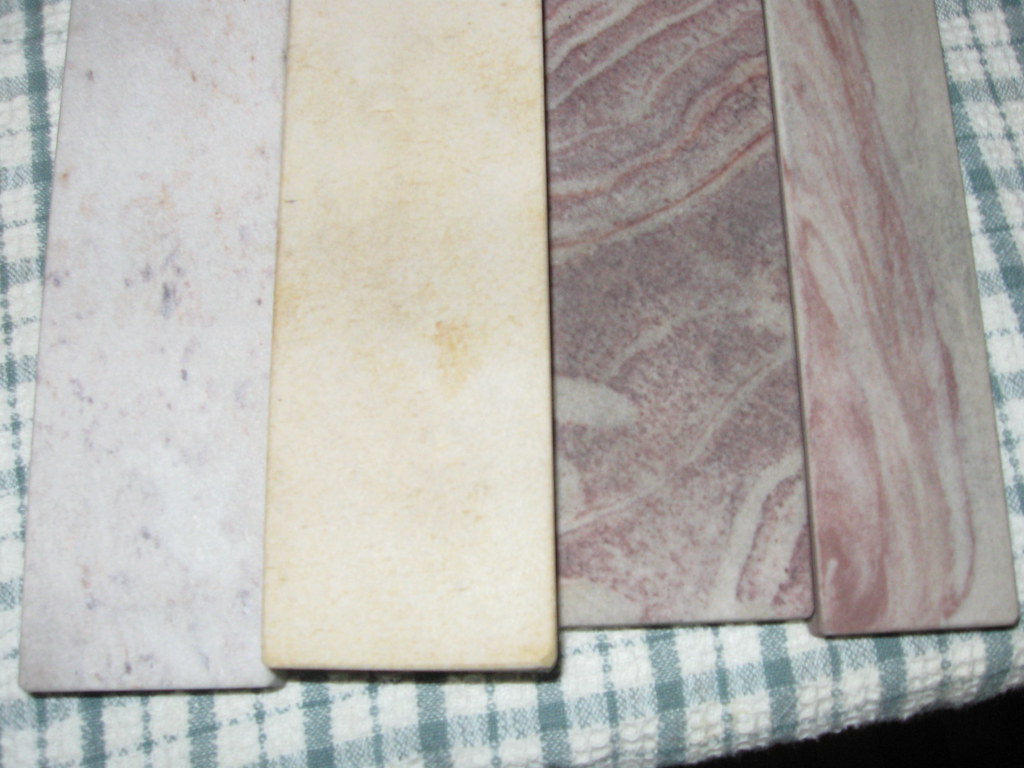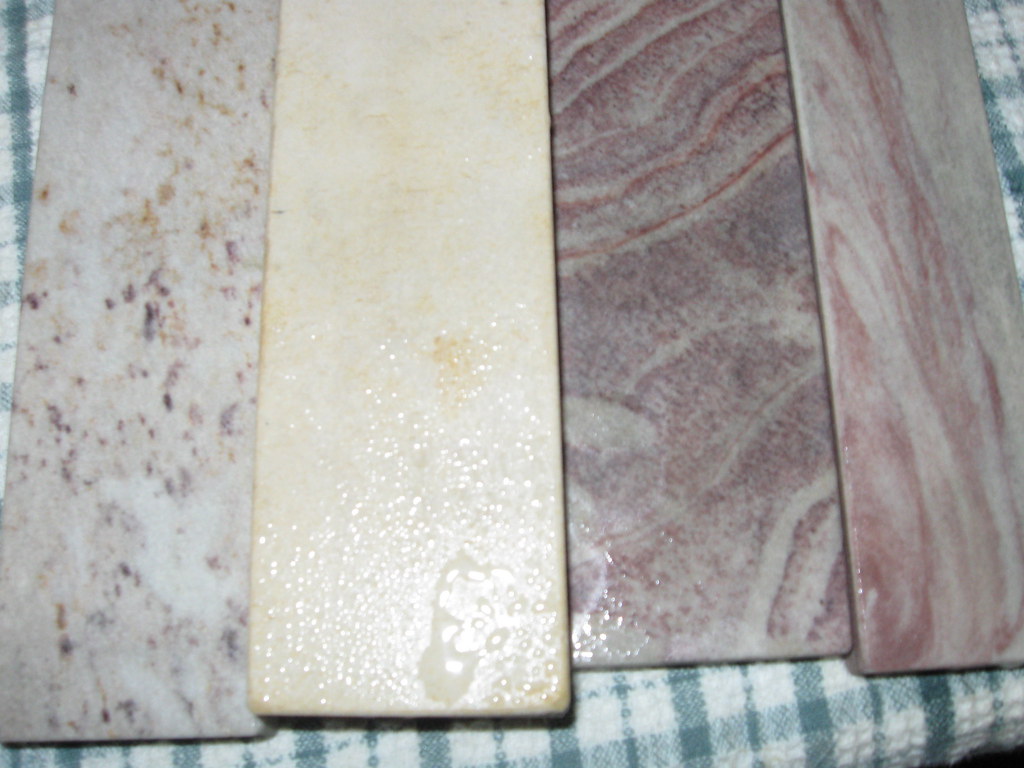The difference between a colored Washita and a soft Ark can be almost impossible to tell apart from a photo. I thought at one time that the colored stones were not Washita's at all. They are different from the vintage ones but they are also different from the soft arks.
Washita, soft, washita, soft.

[url=https://flic.kr/p/2n67bDK]
Of the two reddish coloured stones on the right, I'd be interested to hear if the Washita was notably harder than the soft ark in terms of friability. As I mentioned above; something I associate with Washitas is porosity combined with hardness of structure - like a sponge made out of Hard Arkansas material. My red stripy soft ark is far softer and more friable than any Washita I have, even ones of identical SG.
But I've never had a modern stripy Washita, so it'd be interesting to know if that thinking held true for them too.























